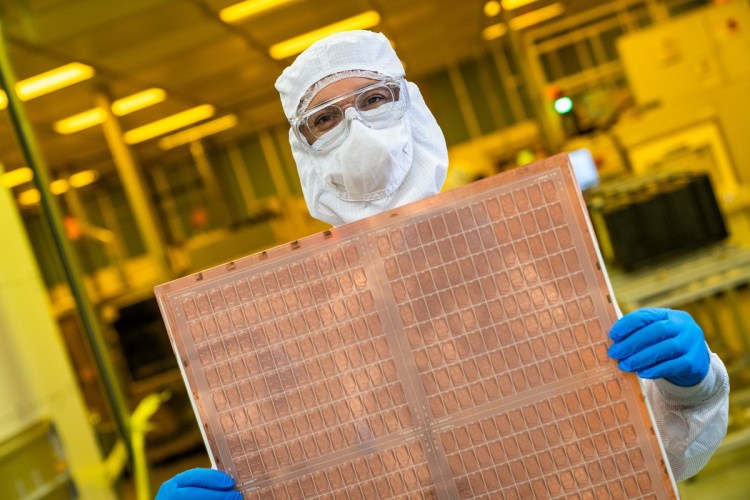Intel, one of the leading semiconductor manufacturers, recently announced its financial results for the third quarter, showcasing its excellent performance and setting the stage for a promising future. Despite a year-on-year revenue decline of 8% to $14.2 billion, the company’s non-GAAP EPS of 41 cents per share exceeded its expectations by 21 cents. Intel’s strong operating leverage and expense management contributed to this impressive outcome.
The company witnessed significant developments in various areas, including process, product, foundry, and artificial intelligence (AI). It surpassed its revenue guidance and achieved a gross profit margin of 45.8%, outperforming its projected figures. Additionally, Intel’s stock market value rose by 6%, currently standing at $136 billion.
CEO Pat Gelsinger’s Vision for the Future
“Simply put, this quarter demonstrates the meaningful progress we have made towards our IDM 2.0 transformation. The foundation of our strategy is reestablishing transistor power and performance leadership.”
– CEO Pat Gelsinger
Gelsinger highlighted the strides Intel has taken in its IDM 2.0 transformation, reiterating the company’s commitment to transistor power and performance leadership. He emphasized their ambitious five-year journey, which has provided them with a clear path to their goals, with nearly 150 million units of chip products already in the market.
Gelsinger also mentioned the company’s paramount focus on cost reduction. Intel aims to cut costs by $3 billion in 2023, and it has already achieved savings of $1.8 billion through divestitures since Gelsinger assumed the role of CEO in 2021. The company remains determined to pursue its strategy and drive constant progress.
Intel’s Unified Approach and Organic Growth
Intel recently integrated its Accelerated Computing Systems and Graphics Group into its Client Computing Group and Data Center and AI Group. This strategic move aims to enhance the company’s go-to-market capability, accelerate the growth of these businesses, and optimize costs. As a result of these changes, Intel modified its segment reporting to align with its reorganized structure.
Addressing concerns about market share loss, Gelsinger acknowledged that Intel faced challenges in technology and processor design over the years. However, he expressed confidence in the company’s trajectory and the resurgent competitiveness it is bringing to the market.
Despite revenue declines in certain groups, such as the Client Computing Group (CCG), the Data Center and AI (DCAI) group, and Network and Edge (NEX), Intel experienced growth in other areas. Notably, Mobileye revenue increased by 18%, and Intel Foundry Services (IFS) achieved a revenue growth of 299%, indicating the company’s diverse portfolio and its commitment to innovation.
Intel’s Technological Advancements and Manufacturing Goals
Intel remains committed to its goal of achieving five manufacturing nodes in four years while reclaiming transistor performance and power leadership by 2025. Intel 7, the company’s first node using extreme ultraviolet (EUV) technology, is now in high-volume manufacturing, alongside Intel 4.
Furthermore, Intel achieved a significant milestone with the release of the 0.9 PDK on Intel 18A. The company also announced plans for developing glass substrates for advanced packaging, which will advance Moore’s Law and facilitate the scaling of transistors in a package.
Intel is actively investing in manufacturing capacity to establish a secure and resilient supply chain. Notably, it launched Fab 34 in Leixlip, Ireland, during the quarter. Intel also plans to open a wafer fabrication facility in Magdeburg, Germany, and an assembly and test facility in Wrocław, Poland. These initiatives aim to create a comprehensive and cutting-edge semiconductor manufacturing value chain in Europe.
Intel’s Cutting-Edge Innovations and Collaborations
Intel prides itself as the leading edge semiconductor manufacturer, operating at scale across all major regions globally. The company continues to demonstrate its commitment to innovation and collaboration by investing in technologies like RISC-V alternative processors and exploring opportunities in the FPGA industry.
Intel’s recent product highlights include the launch of the 14th Generation Core desktop processors and the Intel Core Ultra processors, code-named Meteor Lake. Additionally, the 4th Gen Intel Xeon Scalable processors have gained significant traction, with major cloud service providers adopting them in their operations.
Intel’s collaboration with Stability AI to build a massive AI supercomputer, powered by 4th Gen Intel Xeon Scalable processors and Intel Gaudi2 AI accelerators, further solidifies the company’s commitment to driving advancements in AI.
Intel’s Proactive Steps to Unlock Value for Shareholders
Intel is actively pursuing avenues to unlock value for its shareholders. To this end, the company plans to separate its Programmable Solutions Group (PSG) and establish it as a standalone business. This move will provide PSG with greater autonomy and flexibility to drive growth in the FPGA industry. Intel may also explore collaborations with private investors and conduct an IPO for PSG in the coming years.
Regarding infrastructure expansion and modernization, Intel is setting up the world’s first high-NA EUV tool for commercial use. This tool will support the company’s ongoing efforts to enhance semiconductor innovation and production at the Gordon Moore Park in Oregon.
Additionally, Intel has made substantial investments in its manufacturing capabilities in various locations across the United States, such as Arizona, New Mexico, Ohio, and Oregon. These initiatives reflect Intel’s commitment to advancing its IDM 2.0 strategy and contributing to the growth of the U.S. semiconductor industry.
Despite the challenges posed by the recent conflict in Israel, Intel’s operations have persisted seamlessly. The company’s factory in Israel continues to run smoothly, showcasing the resilience of its workforce and supply chain.
“Before we begin, given our significant and now almost 50-year presence in Israel, we are deeply saddened by the recent attacks and their impact on the region. Our utmost priority is the safety and welfare of our people in Israel and their families. But I also want to recognize the resilience of our teams as they have kept our operations running, and our factory expansion progressing.”
– CEO Pat Gelsinger
Intel is determined to support its employees in Israel and hopes for a swift return to peace in the region.









